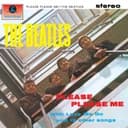The F♭ Major Pentatonic Scale follows the standard interval formula but requires extensive flat notation. The enharmonic equivalent E Major Pentatonic is universally preferred due to its four-sharp key signature being more straightforward than F♭'s multiple flats. This theoretical scale appears primarily in academic contexts.
Enharmonic Equivalence with E Major Pentatonic
F♭ Major Pentatonic and E Major Pentatonic sound identical but use different notation. E Major's four sharps are typically preferred over F♭'s complex flat notation, making it the standard choice for practical music in this key center.
Practical Applications
When working with this key center, use E Major Pentatonic for all practical purposes. The scale functions beautifully over I-IV-V progressions and is essential for improvisation in rock, pop, and blues. Its relative minor C♯ Minor Pentatonic shares the same notes.
Scale Relationships
The pentatonic scale derives from E Major and connects to E Blues. Many guitarists blend major and minor pentatonic scales for expressive rock and blues solos.





